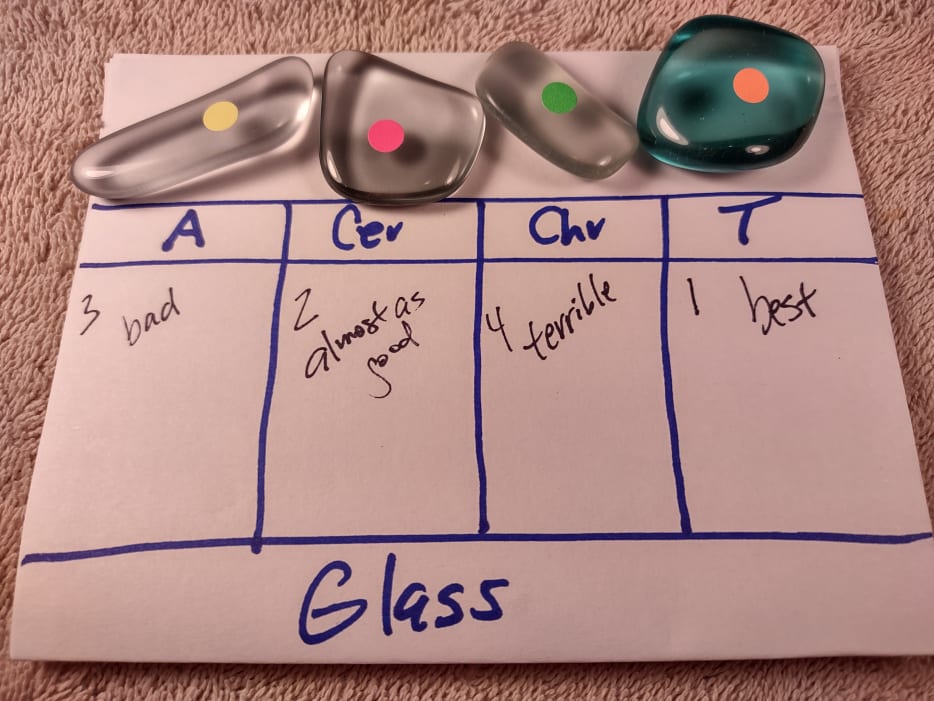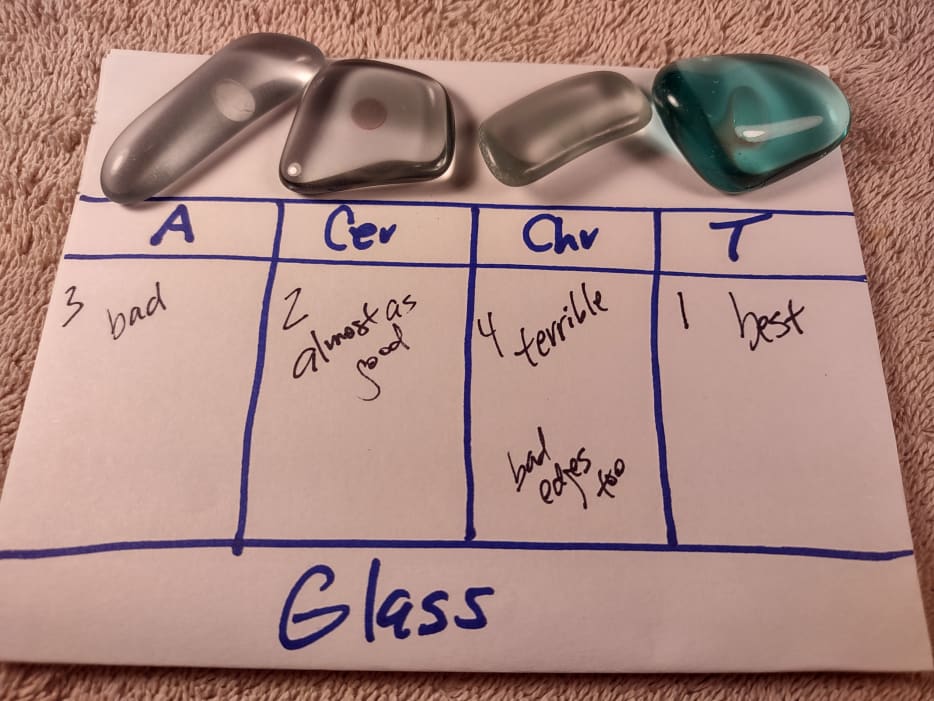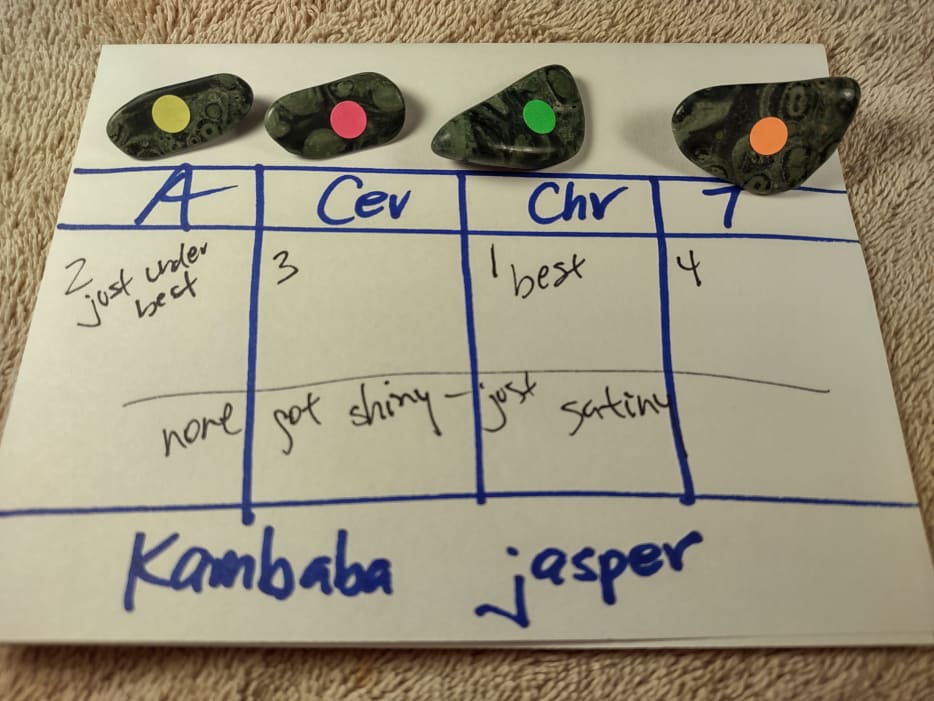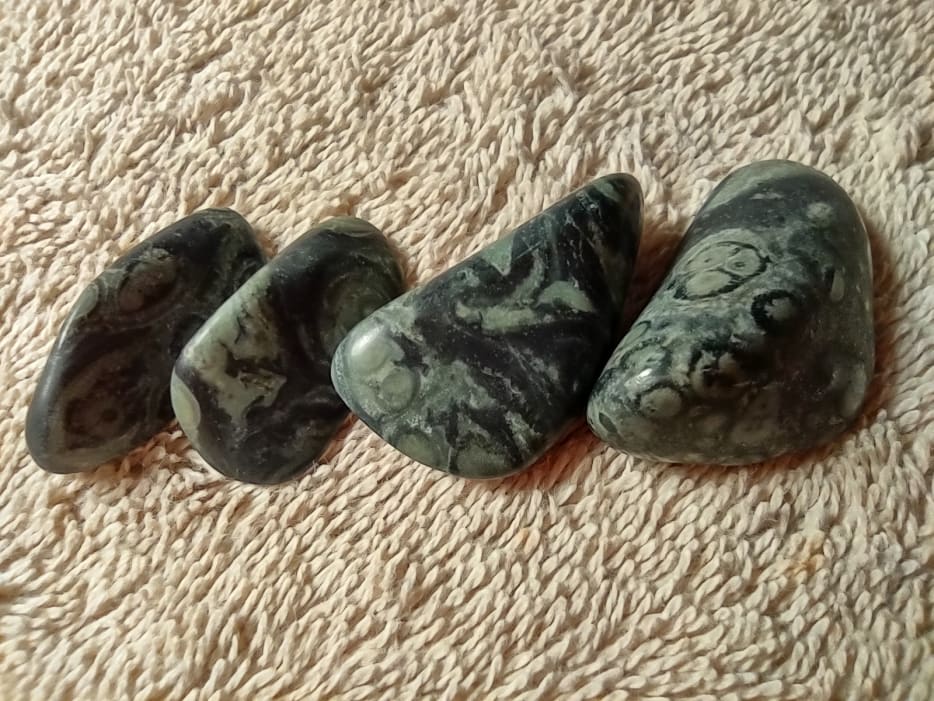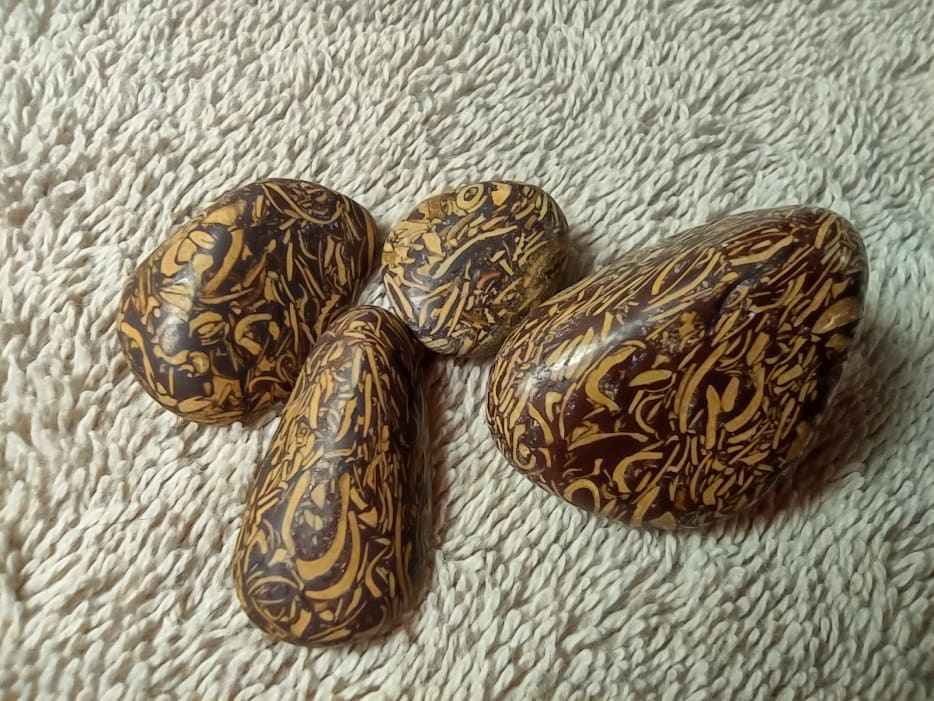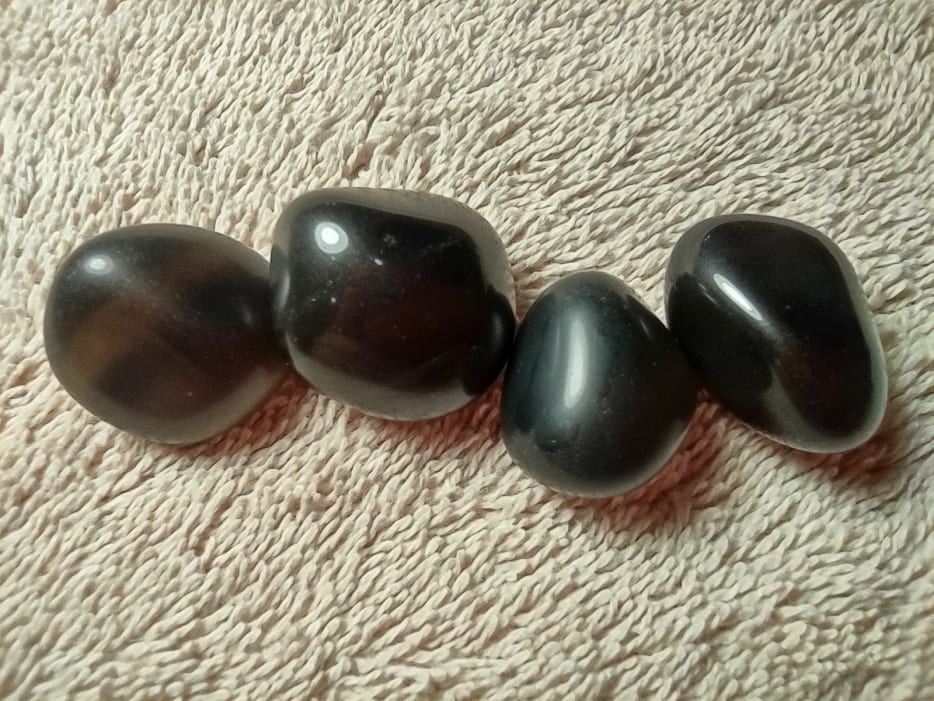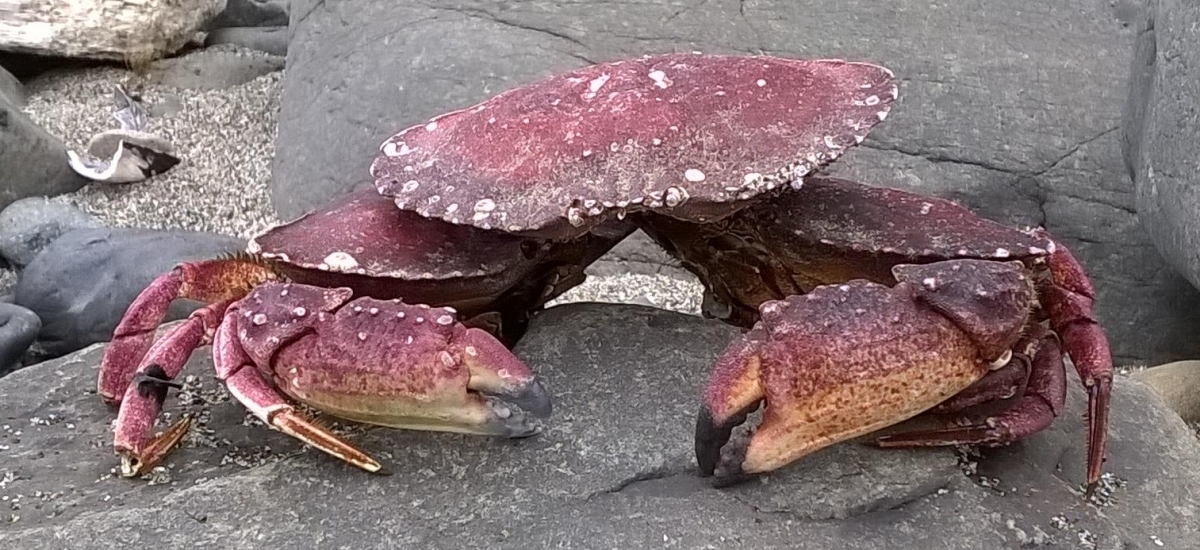|
|
Post by Bob on Feb 2, 2022 12:21:57 GMT -5
Well, the 2nd week of tin oxide is now done, so all rocks are in bags and awaiting my comparison work. But I'm so dang busy in my office I've hardly had time to turn around. But rest assured I will be working on it soon. At first glance, the 2nd week in tin ox may have gotten rid of all the unshiny flat sides I was seeing.
Mel, I just used normal plastic beads.
|
|
|
|
Post by Bob on Feb 24, 2022 14:07:47 GMT -5
In addition to being very busy in my work and not having time yet to do photo comparisons, I've been contemplating my approach and think I made an error. When I started accumulating all these different materials 3 years ago, I was worried that they all would not fit in a 6 lb barrel so tried to get keep small ones of almost everything. But, I never bothered to actually test how much the barrel would be filled until I started the tumbling test here.
The result you can see in the photos above is that the rocks took up probably a mere 25% or less of the barrel! I never do polishing batches that way. Maybe it might happen someday when I experiment more with delicate obsidian batches, but that's another story. So, I've wondered if I have accidentally made this test abnormal in that no one does polishing with 75% or more cushioning plastic beads.
Maybe that many beads lessens the rocks rubbing and sliding against each other and affects the polish negatively. Maybe just the opposite with mixed materials like this of different Mohs. Maybe all those beads cushions the softer feldspars and glass and obsidian from the hard agates and jaspers and so helps all get shiny. I have no idea of the answers.
But what I'm leaning toward doing is this. I don't have larger rocks in all those types, but I do in most of them and in some rock types, I have hundreds of choices to choose from in many sizes already polished or awaiting polish. If I go larger on those available, this would enable me to redo this test with normal loading--at least for me--where the plastic pellets in a polish run are 10%--sometimes as much as 25%. I don't even use cushioning pellets on polish runs if there is a real good mix of many rock sizes. So I can take what I need out of my finished storage, and any from this group that need to be reused, put them all through a 1,000 grit run to knock off the polish, and redo this whole test, then do a very detailed photo comparison w/o worrying that so much cushioning plastic pellets was a factor.
In the meantime, with these finished rocks, I'm thinking about not doing a rock type by type detailed comparison given the plans on the redo. But I can make some general observations and also note anything where there are great differences. For instance, the hematite has great differences.
I'll wait to see if anyone has a better idea or thinks I'm on the wrong track for a few days before I go forward any more. It will not be hard to redo this with the larger rocks. The hard part was the careful accumulation over 3 years of all these various types and making sure I had at least 4 of like quality and size for each type.
|
|
|
|
Post by Bob on Jun 13, 2022 9:09:14 GMT -5
Well, it's been months since I had any time to devote to this. All this time, the finished rocks have been in labelled sealed bags. I've decided to hold off on the idea about mixing in larger rocks to make a full 6lb barrel. Having some small and some large introduces another variable.
I just don't have time to do the high level photography with my camera, but I do have time to use my cellphone camera. It isn't that great, a Moto model about a year old, but it's better than nothing.
As a reminder, none have been burnished as I felt that would sort of ruin the differences between polishes.
|
|
|
|
Post by Bob on Jun 13, 2022 9:15:37 GMT -5
|
|
|
|
Post by Bob on Jun 13, 2022 9:17:46 GMT -5
   Figured I might do the more interesting ones first, and save for last the basic chalcedonies and agates and jaspers. Also am taking a 10x hand lens to them in case something gets revealed that way that isn't visible to naked eye. When I take the last photo as a closeup, I'm going to arrange the rocks is the same left to right order even though I cram them close together. We were all very interested in the nephrite test, and I must admit to hoping for something special to happen. It didn't. In fact, holding all 4 in the hand they all look pretty much alike. The feel of the surface is very pleasing, like a hard piece of plastic with a bit of texture on it. The differences from one polish to another is extremely minor and almost impossible to see. In case you are wondering, this is pretty high quality BC material and all cut from the same piece which was pretty uniform. The partial shine is identical on all. The only reason I rated A and Cer a bit better is because they made smooth surfaces, whereas Chr and T made a bit more texture which I think is referred to as "orange peel". My survey of literature predicted that T would have done best. |
|
|
|
Post by Bob on Jun 14, 2022 11:05:52 GMT -5
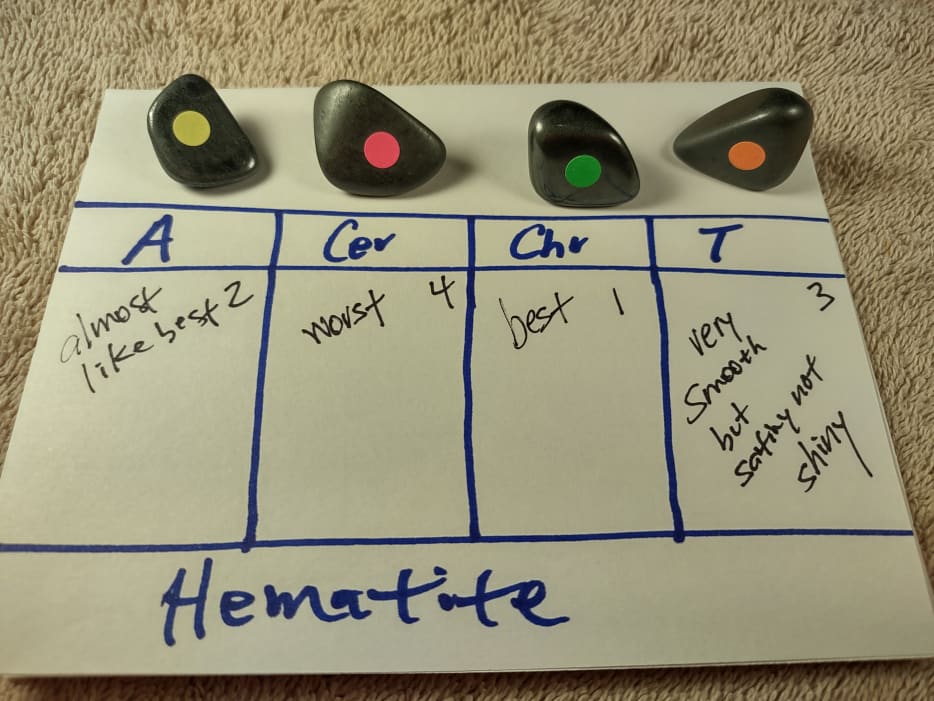   I was kind of excited about the hematite. For several years, I have been buying hematite rough, trying to get better and better quality. Often, the results are lousy because it's pretty porous. Finally, a couple of years ago I ended up with 2 very shiny pieces. These just ended up being random pieces being tumbled with other things. Notes show it happened with A, but that was also all I was using. The literature had predicted Cer, but with special methods to be used which I haven't bothered to look up now. I was disappointed that this test didn't produce the super high luster chrome-like shine as I have with that piece from 2 years ago. Perhaps I will find that piece and post a photo of it here too. |
|
Deleted
Deleted Member
Member since January 1970
Posts: 0
|
Post by Deleted on Jun 14, 2022 15:10:03 GMT -5
BobThat is a lot of work you’ve done! Thanks for sharing that with us all, looking forward to seeing more.
|
|
|
|
Post by Bob on Jun 15, 2022 15:03:47 GMT -5
  These are 3 pieces that I got done over a year ago in some random alum ox batch of mostly agates and jaspers I think. The big one is darn near flawless to anything the naked eye can see. The edges of the smallest one are a bit porous. The middle one as some imperfections too, but all have a near mirror shine on them. Was sure hoping it would happen in this polish test too. There is a possibility of wide variation in source material. All 4 of the polish test pieces were from same purchased batch, but I don't think these 3 are from the same batch. |
|
|
|
Post by Bob on Jun 15, 2022 15:09:01 GMT -5
|
|
Deleted
Deleted Member
Member since January 1970
Posts: 0
|
Post by Deleted on Jun 15, 2022 18:47:05 GMT -5
That blue glass is really pretty!
|
|
|
|
Post by Bob on Jun 16, 2022 10:41:53 GMT -5
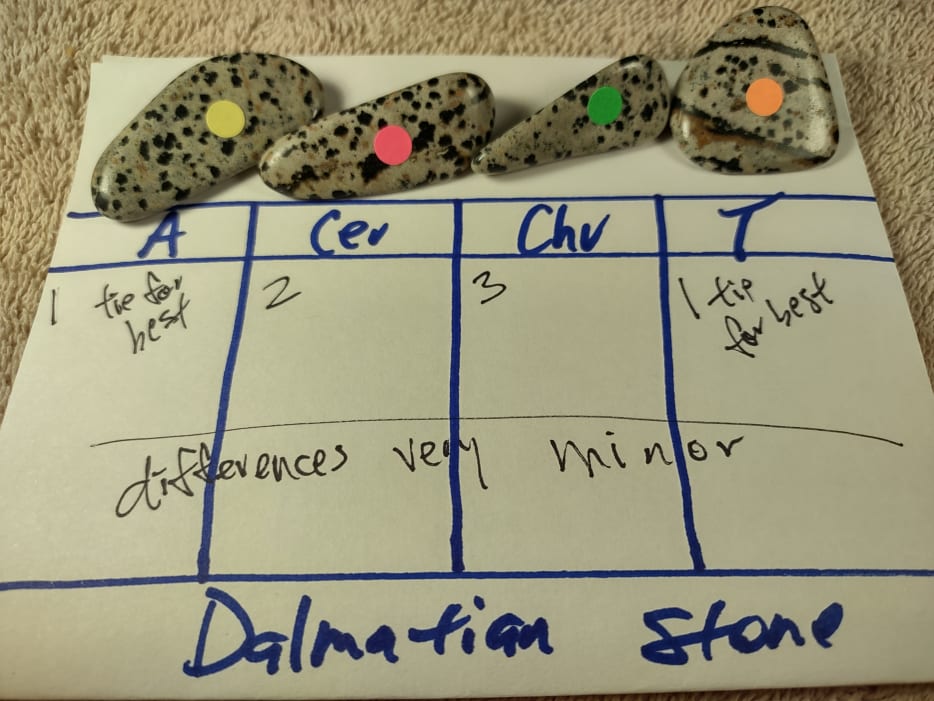  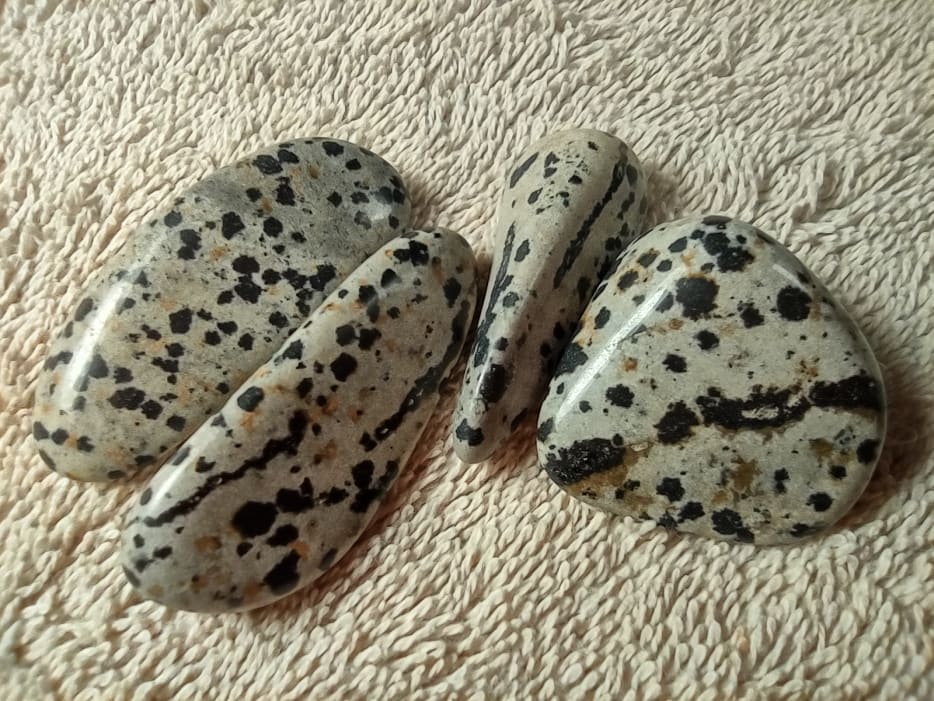 T had been predicted from literature to do best. This is strange material with a weird surface. I've tumbled a lot of it in last few years and never have got a high shine, but there is some shine. It really adds some beauty to a bowl of polished stones. I've noticed people reach for it and it's one of my fav materials. There are almost always some crevices here and there in the dark areas, and you can see some of them. I've learned to keep going mostly in 220 until none of those are on the edges, but not to keep going further in hopes there will be no more as that is futile. Opticon before polish also helps. |
|
nursetumbler
Cave Dweller 
Member since February 2022
Posts: 928 
|
Post by nursetumbler on Jun 16, 2022 18:54:17 GMT -5
   T had been predicted from literature to do best and did. This is strange material with a weird surface. I've tumbled a lot of it in last few years and never have got a high shine, but there is some shine. It really adds some beauty to a bowl of polished stones. I've noticed people reach for it and it's one of my fav materials. There are almost always some crevices here and there in the dark areas, and you can see some of them. I've learned to keep going mostly in 220 until none of those are on the edges, but not to keep going further in hopes there will be no more as that is futile. Opticon before polish also helps. May I ask what opticon is? |
|
|
|
Post by Bob on Jun 16, 2022 22:18:13 GMT -5
Please Google Opticon fracture sealer. Using it for years has greatly helped my results with material like this, lapis, rhyolite in its many forms, amazonite, green tree agate and others w/o tight non-porous surfaces even after 1,000 grit. Also helps on fibrous sides of tiger's eye.
|
|
|
|
Post by Bob on Jun 20, 2022 9:44:44 GMT -5
   Because this material varies quite a bit, it was a royal pain to find 4 pieces of Persian lapis lazuli similar size and composition ready for this test. Literature said Chr is the one to use. A made bit of a shine, and T made a true shine and this was the first time ever I got this material to shine. Opticon was used. I have quite a bit of lapis that was done with A and I'm now looking forward to redoing it all through T. This brings up a question. To redo rocks that were finished in polish A to another polish B, should the A polished rocks just be put in that new B polish, or first taken back to 600 or 1,000 and "unpolished"? I have no idea of the answer. |
|
|
|
Post by Bob on Jun 21, 2022 9:23:54 GMT -5
|
|
|
|
Post by Bob on Jun 21, 2022 16:59:06 GMT -5
|
|
|
|
Post by Bob on Jun 22, 2022 9:46:46 GMT -5
|
|
|
|
Post by Bob on Jun 23, 2022 9:01:54 GMT -5
|
|
Deleted
Deleted Member
Member since January 1970
Posts: 0
|
Post by Deleted on Jun 23, 2022 13:02:23 GMT -5
Looking good Bob. One of my daughters favorite is sodalite. We got a descent shine on some with AO. The obsidian you did in the AO has a cool stripe through it. |
|
|
|
Post by Bob on Jun 24, 2022 9:34:14 GMT -5
   T was predicted by literature. This material is very common where I live and so I've been trying to tumble it a long time, mostly with failure. It's fragile and prone to cracks and cleavage. Strange things happen. Sometimes, after a very long time in rough grind I will then move on to 220 for a week, and then 600 for a week and am disappointed to find it coming out of 600 worse than it went in. So after taking maybe 200 of these through polish in last few years, and getting maybe 10 keepers, I'm no longer picking much of it up. Opticon helps. However, something odd happened in this polish test. First of all, all 4 pieces look good even though Chr is only satiny and no shine. There are no problem areas, and I don't think I've ever had this happen even when only polishing this material all by itself or if not by itself only with other feldspars. Is it possible that tumbling it with all those other different materials helped? There are also some nuances in the 3 that look good. With T, the parts that are shiny are the shiniest of all 3, but between them not near as shiny and a little bit textured. With A, those shiny parts aren't quite as shiny, but between them shinier than those same areas with T. With Cer, the whole rock is the same, which looks and feels great, but not as shiny as the shiniest parts of T and A. Pressing myself to make a decision I think I would go with Cer if had to pick one. The shiny parts I've referring to above in these rocks look like translucent rocks-within-a-rock that is always there in this material, perhaps crystals. I'm looking forward to if this polish test has similar results for all the feldspars tested: orthoclase, Labradorite, amazonite, moonstone, etc. Seems like it should be that way, but of course it probably won't. |
|














